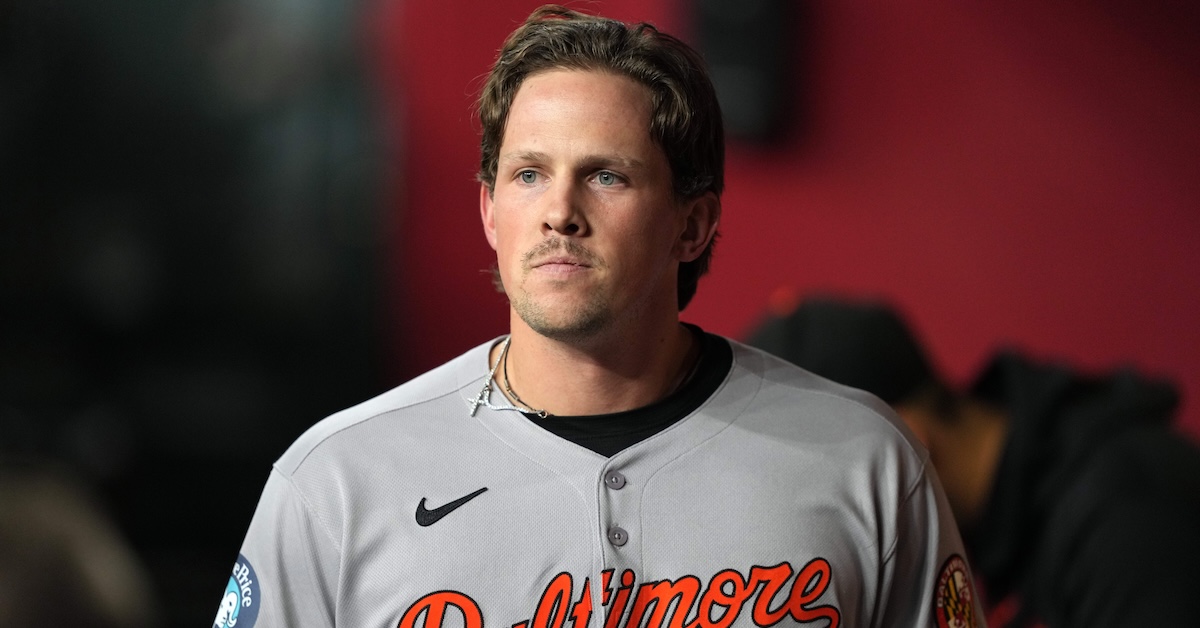The good news for the Baltimore Orioles is they won the first game of their three-game series against the first-place New York Yankees on Monday night. The bad news is the win only improved the team’s record to 11-17, the fourth-worst mark in baseball. As it stands Tuesday morning, the Orioles sit in last place in the AL East, and with nearly a fifth of the season over, it’s getting harder to dismiss the poor start as merely a blip.
Where the Orioles have struggled is not that hard to pinpoint: nearly everywhere. The rotation has combined for a 5.62 ERA/5.14 FIP and 6.4 strikeouts per nine innings, numbers that firmly place Baltimore at the bottom of the league. The defense hasn’t been much better, and after a decent start, the offense has evaporated over the last two weeks.
The season is longer than just April, of course, and the Orioles theoretically still have plenty of time to right the ship. But do they have the deckhands? To show whether or not they do, I took the current Orioles depth chart, and estimated the projected WAR based on playing time, using both ZiPS WAR from the preseason and the updated ZiPS WAR I ran overnight. Let’s start with the offense.
ZiPS ROS Projections – Baltimore Orioles Hitters
All in all, the offense has shed about three wins from its rest-of-season projections. While no individual Orioles player’s April is enough to cause a fundamental change in his outlook, it’s notable how these projections have eroded across the board — which explains the team’s overall decline in projected production. Of the 19 players listed here, only two have seen their rest-of-season projections improve over the last month, Cedric Mullins and Ryan O’Hearn.
The silver lining for the Orioles is that even with that reduced outlook from their hitters, their projected 25 WAR would give them the sixth-best group of position players in baseball. ZiPS likes Baltimore’s batters less than it did in March, but it’s a matter of degree. Even so, losing three future wins still matters quite a bit considering that this team is starting at the back of the pack. It’s far too soon to say something is actually broken with the offense, but urgency ought to create a less risk-averse approach. It’s almost undeniable at this point that Coby Mayo, who is currently beating up on Triple-A pitchers, has more upside than Ramón Laureano and Ryan Mountcastle. Sure, maybe Mayo would come with some risk, but how can a team that’s struggling to score runs justify not promoting him?
Let’s move on to the pitching.
ZiPS ROS Projections – Baltimore Orioles Pitchers
The pitching projections have changed less than the hitting/fielding ones, in large part because the bullpen, with a 3.77 FIP, has been considerably better than the rotation. But it’s not exactly an auspicious sign that a team with an ERA over 5.00 is projected for a relatively small decrease in production. Rather, these new projections indicate that this collection of pitchers, as currently configured, would be a problem even if it was playing up to preseason expectations. Obviously, it would be great if Dean Kremer could keep the ball in the park and Charlie Morton could avoid allowing nearly a walk an inning, but even if these and other things happen, the O’s still would project to have one of the lousiest pitching staffs of the playoff contenders.
Without a common thread weaving together the lineup’s struggles, it’s hard to blame the organization itself for its talented hitters simply not hitting. But Baltimore’s poor pitching staff is absolutely the fault of the front office and ownership, because what we’re seeing here is a failure of design rather than player execution. Before last season, the Orioles faced a similar lack of high-end pitching, and they addressed it in the short term when they traded for Corbin Burnes. This time around, though, after the departure of Burnes to free agency, the team sat by and watched frontline starter after frontline starter come off the market without signing any of them. Instead of replacing Burnes, Baltimore built a Potemkin rotation. As the Yankees were signing Max Fried and the Red Sox were picking up Garrett Crochet, the Orioles added the 41-year-old Morton, Sugano, and later, Kyle Gibson. Unfortunately for the O’s, you can’t weave several no. 4 starters together and make an ace.
Even with their ramshackle rotation, the Orioles remain a realistic contender, but as we’ve seen over the last few weeks, their margin for error is thin. They can’t bank on their offense to always bail out their inadequate starting staff, and it’s too late to play the free-agent game and go after Fried or Blake Snell or re-sign Burnes. The trade options at the moment aren’t great, either. It’s probably too late now to try and work out a Dylan Cease trade with the Padres, and Sandy Alcantara has really struggled in his return from Tommy John surgery. Perhaps Baltimore could buy low on the 2022 NL Cy Young winner, but such a trade would certainly come with some risk. In other words, assured salvation is unlikely to come from outside the organization, at least not until more teams drop out of the playoff race.
At the start of the season, ZiPS gave the Orioles a 30% chance to win the AL East and a 63% shot to make the postseason. Those probabilities have dropped to 5% and 19%, respectively. This is not a lost season quite yet, but time is not on Baltimore’s side.
The Roman consul Appius Claudius Caecus is known for the saying Faber est suae quisque fortunae, roughly meaning “every man is the architect of his own fortune.” The Orioles have had some unlucky breaks this season, but their struggles this year have largely been forged in the Camden Yards smithy.
Content Source: blogs.fangraphs.com

